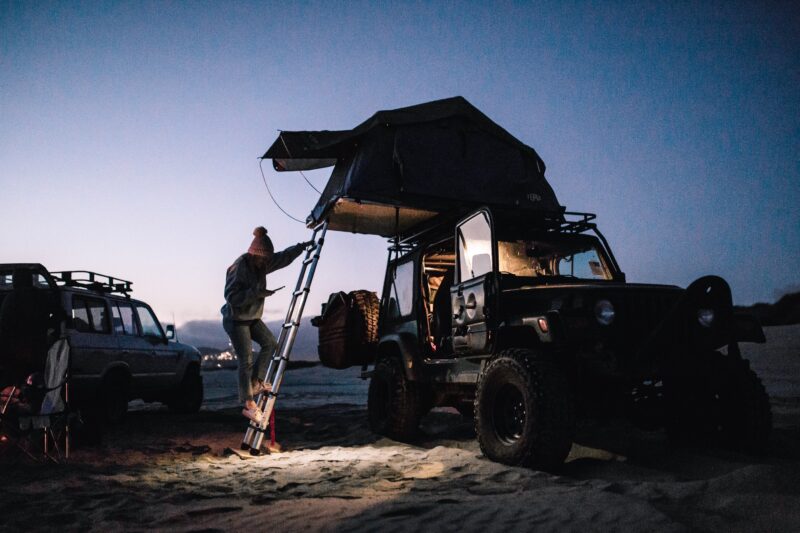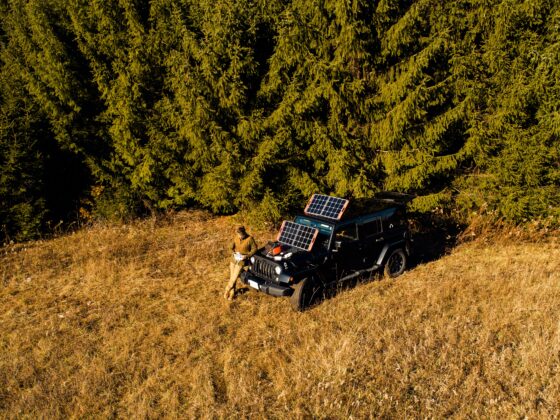In a world of fast-paced travel and easy access, there is a growing trend that takes adventurers off the beaten path and into the great unknown. Overlanding, a form of self-reliant travel that combines elements of off-roading, camping, and exploring remote regions, is gaining popularity among thrill-seekers and nature enthusiasts alike. But what exactly is driving this surge in popularity, and what overlanding trends should we be on the lookout for?
Overlanding Philippines is becoming increasingly popular because of the desire for authentic and immersive travel experiences. In an age of Instagram filters and curated travel content, overlanding offers the chance to disconnect from the digital world and reconnect with the natural world. It allows travelers to get off the tourist trail and truly experience the untouched beauty of remote landscapes.
Additionally, the rising popularity of van life and alternative travel lifestyles has contributed to the growth of overlanding. With compact campervans and rugged off-road vehicles becoming more accessible, adventurers are embracing the freedom and flexibility overlanding offers.
As overlanding continues to gain momentum, there are several trends to watch out for. From eco-conscious travel practices to the rise of overland festivals and events, the overlanding community is constantly evolving. For those with a sense of adventure and a love for the great outdoors, overlanding may just be the next big thing in travel.
Benefits of overlanding
Overlanding offers many benefits that attract travelers seeking a unique and adventurous experience. One of the main advantages of overlanding is the opportunity to explore remote and off-the-beaten-path destinations. Unlike traditional camping or road trips, overlanding allows travelers to venture into areas not easily accessible by regular vehicles. This opens up a new world of breathtaking landscapes, hidden gems, and secluded campsites.
Another benefit of overlanding is the sense of freedom and self-reliance it provides. Overlanders can go wherever they please without the constraints of hotel bookings or rigid itineraries. This flexibility allows for spontaneous detours, unplanned adventures, and the chance to truly immerse oneself in the journey. Whether waking up to a stunning sunrise over a mountain range or stumbling upon a hidden waterfall, overlanding offers unparalleled opportunities for serendipitous moments.
Overlanding is a great way to disconnect from the digital world and reconnect with nature. With minimal distractions and limited access to technology, overlanders can fully embrace the beauty and tranquility of the natural surroundings. Whether star-gazing under a clear night sky or listening to the sounds of wildlife, overlanding allows travelers to appreciate the pleasures of the great outdoors.
Rise in popularity of overlanding in the Philippines
Overlanding has seen a significant rise in popularity in recent years, and several factors have contributed to this trend. One of the main drivers of the increased interest in overlanding is the desire for authentic and unique travel experiences. In a world where everything seems to be curated and filtered, overlanding offers a refreshing escape from the mainstream. Travelers can step outside their comfort zones, challenge themselves, and create lasting memories.
Another reason for the rise in popularity of overlanding is the growing fascination with van life and alternative travel lifestyles. As more people seek unconventional ways of living and traveling, the appeal of hitting the road in a campervan or off-road vehicle has become undeniable. The freedom and flexibility van life offers, combined with the sense of adventure that overlanding provides, make for an irresistible combination.
Furthermore, the rise of social media and the influence of travel influencers have played a significant role in popularizing overlanding. Platforms like Instagram have showcased the beauty and allure of overlanding, inspiring others to embark on their own off-road adventures. The ability to share stunning photos and captivating stories has created a sense of community within the overlanding world, further fueling its growth.
Overlanding vs. traditional camping
While overlanding and traditional camping share some similarities, distinct differences set them apart. Traditional camping typically involves setting up a tent in a designated campground or national park, while overlanding allows for more freedom and exploration. Overlanding often involves off-road driving and the ability to camp in remote locations without designated campsites.
Another difference between overlanding and traditional camping is the level of self-sufficiency required. Overlanders need to be prepared for extended periods in remote areas, often without access to amenities such as running water or electricity. This requires careful planning, packing essential supplies, and knowledge of wilderness survival skills. Traditional camping, on the other hand, often takes place in areas with more amenities and facilities.
In terms of the overall experience, overlanding offers a more immersive and adventurous journey compared to traditional camping. Overlanders can explore off-the-beaten-path destinations, encounter wildlife, and experience the thrill of off-road driving. Traditional camping, while still providing a connection with nature, tends to be more focused on relaxation and enjoying the tranquility of the outdoors.
Overlanding trends to watch out for
As overlanding continues to gain momentum, several trends are shaping the future of this adventurous travel style.
-
Eco-consciousness
One of the key trends in overlanding is the emphasis on eco-conscious travel practices. With a growing awareness of the impact of travel on the environment, overlanders are seeking ways to minimize their ecological footprint. This includes practices such as Leave No Trace principles, using renewable energy sources, and supporting local conservation efforts.
-
Overland events
Another trend in overlanding is the rise of overland festivals and events. These gatherings bring together like-minded adventurers to celebrate the spirit of overlanding and share their experiences. Overland festivals often feature workshops, off-road challenges, and networking opportunities. For instance, brands such as Overland Kings provide a platform for overlanders to connect, learn from each other, and showcase their vehicles and gear.
-
Technology
Furthermore, technology plays a significant role in shaping the future of overlanding. From advanced GPS systems and satellite communication devices to solar-powered gadgets and off-grid power solutions, overlanders are embracing technology to enhance their experiences. The integration of technology not only improves safety and navigation but also allows for a more comfortable and connected overlanding experience.
Essential gear for overlanding
When it comes to overlanding, having the right gear can make all the difference in ensuring a successful and enjoyable trip. Here are some essential items to consider when preparing for an overlanding adventure.
- Reliable off-road vehicle: Choose a vehicle capable of handling rough terrains with the necessary cargo capacity for your gear and supplies. Popular choices include 4×4 trucks, SUVs, and specially designed off-road campervans.
- Camping equipment: Invest in high-quality camping gear, including a durable tent or rooftop tent, sleeping bags, camping chairs, and cooking utensils. Opt for lightweight and compact options that are easy to pack and set up.
- Navigation tools: A reliable GPS system or navigation app is essential for overlanding. Make sure to have detailed maps, a compass, and a backup navigation method in case of technology failures.
- Recovery gear: When venturing off-road, preparing for potential obstacles or vehicle recovery situations is crucial. Carry a recovery kit with a winch, tow straps, shackles, and a shovel. All these are available from your favorite outdoor shop in the Philippines.
- Communication devices: In remote areas, it’s vital to have a means of communication in case of emergencies. Consider investing in a satellite phone or a two-way radio for reliable communication.
- Camping essentials: Pack essentials such as a first aid kit, insect repellent, sunscreen, headlamps, and a portable camping stove. Don’t forget to bring enough food, water, and fuel for your journey.
Planning an overlanding trip
Proper planning is vital to a successful overlanding trip. Here are some steps to consider when planning your adventure:
-
Choose a destination
Research and select a destination that aligns with your interests and preferences. Consider weather conditions, terrain difficulty, and available camping areas.
-
Plan your route
Determine the course you will take, including the stops and attractions along the way. Consider the distance, driving time, and any permits or restrictions that may apply.
-
Check vehicle requirements
Ensure your vehicle is adequately equipped and maintained for off-road travel. Check tire pressure and fluid levels and carry out any necessary repairs or upgrades.
-
Pack strategically
Make an overlanding checklist of essential items and pack efficiently to optimize space. Prioritize items based on importance and accessibility.
-
Research local regulations
Familiarize yourself with the rules and regulations of the areas you will be visiting. Be aware of any permits required, camping restrictions, and wildlife protection guidelines.
-
Share your itinerary
Inform a trusted friend or family member about your travel plans, including your route and estimated arrival time at each destination. This provides an extra layer of safety in case of emergencies.
Safety tips for overlanding
While overlanding can be an exhilarating and rewarding experience, it’s essential to prioritize safety. Here are some safety tips to keep in mind:
-
Research and plan for emergencies
Familiarize yourself with emergency procedures and contact information for local authorities or rescue services. Carry a first aid kit and know how to use it.
-
Stay informed about weather conditions
Check weather forecasts and road conditions before and during your trip. Be prepared for sudden weather changes and adjust your plans accordingly.
-
Practice responsible off-roading
Respect the environment and adhere to designated trails and off-road driving guidelines. Avoid damaging vegetation, disturbing wildlife, or causing erosion.
-
Be aware of wildlife
In remote areas, wildlife encounters are possible. Keep a safe distance and avoid feeding or approaching wild animals.
-
Practice fire safety
Be cautious when using campfires or cooking stoves. Follow local fire regulations and ensure the fire is fully extinguished before leaving the area.
-
Stay connected
Maintain communication with others, especially when traveling alone. Share your location and update your status regularly. Carry a fully charged cell phone or satellite communication device.
Conclusion: The future of overlanding
As the desire for authentic and immersive travel experiences continues to grow, overlanding is becoming an increasingly popular choice for adventure seekers. The appeal of disconnecting from the digital world, embracing the freedom of the open road, and exploring remote landscapes is undeniable. With the rise of van life and alternative travel lifestyles and the constant evolution of overlanding trends, it’s clear that this form of self-reliant travel is here to stay.
Whether it’s the eco-conscious practices, the sense of community at overland festivals, or the integration of technology, overlanding is continuously evolving to meet the needs and desires of travelers. As more people seek unique and off-the-beaten-path experiences, overlanding offers the perfect blend of adventure, freedom, and connection with nature.
So, if you’re looking for a travel experience that goes beyond the ordinary, consider embarking on an overlanding adventure. Pack your gear, hit the road, and discover the incredible beauty that awaits in the great unknown. The future of overlanding is bright, and the possibilities are endless.


